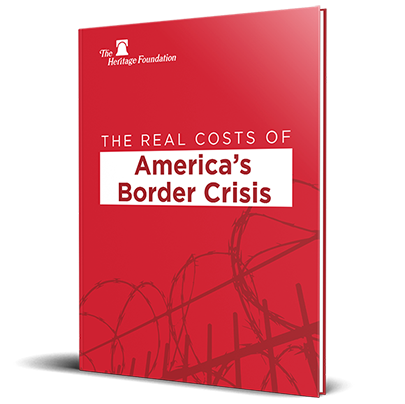Stable marriages are the bedrock of healthy families and ultimately of healthy societies. Not only do strong marriages provide one of the greatest sources of human happiness, but healthy marriages largely prevent poverty, physical and emotional health problems (in children and adults), child abuse, and youth delinquency.REF Children raised by their married parents are also more likely to graduate from high school, attend college, and move up the income ladder.REF
Marriage in America has been in decline for several decades, particularly among those with fewer economic resources. Low-income and working-class Americans are less likely to marry, and they experience significantly higher rates of unwed childbearing, as well as divorce when they do get married. Consequently, far more children from these communities are raised in single-parent homes.REF
To address the problem of declining marriage, some states and communities have implemented programs to help couples to build and maintain healthy relationships and marriages. These efforts are funded with federal dollars available to states through programs such as Temporary Assistance for Needy Families (TANF), as well as with state funding. More states should bolster marriage, given its importance to individual and societal well-being.
Healthy-Marriage and Relationship Education
Most efforts by states to strengthen marriage involve providing marriage and relationship education. Healthy-marriage and relationship education covers a wide variety of topics and can be tailored to different audiences. It can be directed to unwed parents, a group at significant risk of breaking up and who are more likely to have lower incomes; offered to couples on the brink of divorce to help them to assess whether reconciliation is possible; and provided to help teenagers to learn what healthy dating relationships look like and to avoid stumbling blocks on the path toward marriage.REF
Some political leaders and researchers have been critical of the effectiveness of marriage and relationship education, particularly for lower-income couples who often face significant challenges. However, most of their criticism is based on early evaluations of programs funded by the federal Healthy Marriage and Relationship Education Initiative. A broader investigation of the literature and more recent evaluations show that healthy-marriage and relationship education programs generally result in small-to-modest increases in relationship quality and communication skills and sometimes result in greater relationship stability.REF Marriage education is not a panacea, but it is one tool states can use to help to strengthen families.
Healthy-Marriage Initiatives
Since the late 1990s, a few states have implemented programs to help couples to build and strengthen their marriages. Utah and Oklahoma are the most ambitious.
Utah. The state implemented the Utah Healthy Marriages Initiative 25 years ago under then-Governor Mike Leavitt (R). Utah’s marriage initiative offers most of its marriage-strengthening resources through its StrongerMarriage.org website.REF The website provides a host of educational resources, including: a self-guided marriage education course; a research-based relationship assessment to help couples examine areas of strength and weakness in their relationships; links to healthy-marriage and relationship education courses offered in the state, including virtual classes; monthly webinars; and downloadable guidebooks on topics such as marriage preparation or how to deal with thoughts about divorce. The initiative also runs a weekly podcast that features interviews with marriage and family life professionals. These resources are free for state residents. Ongoing funding is supporting the development of many more online education courses and resources.
Utah’s marriage initiative also advertises the state’s “premarital education promotion policy,” an in-statute policy that encourages couples to participate in premarital education or counseling. Utah is one of 10 states that incentivizes marriage preparation by giving couples a discount on their marriage license fee for investing in premarital education. The goal of the policy is to help to prevent divorce by encouraging couples to formally assess the health of their relationship, develop better communication and relationship skills, and work on issues that could increase their risk of divorce.
Throughout the years, Utah has also implemented marriage-strengthening activities, such as creating a relationship curriculum for high schoolers, providing healthy-marriage and relationship education for parents of children in Head Start, and supporting marriage enrichment conferences for the public during National Marriage Week.REF
Utah’s marriage initiative is guided by a state commission, which is run by the Utah State University Extension, and also works with the new Office of Families initiative begun by Governor Spencer Cox (R). The marriage commission is composed of people with a wide variety of specialties: family life educators, marriage and family therapists, professors, religious leaders, legislators, members of the media, and business leaders.REF
Oklahoma. Like Utah, Oklahoma has provided healthy-marriage and relationship education for roughly two decades.REF Oklahoma has provided marriage and relationship education in schools, prisons, churches, and community centers.
Although Oklahoma has scaled back some of its programming due to budget cuts, one of the main programs it continues to run is the Family Expectations program in Oklahoma City.REF This program is aimed at unwed parents to help them to increase the quality and stability of their relationships and improve the likelihood of building a healthy marriage. Unwed parents are a group particularly at risk for breakup, and these couples frequently face other challenges, such as financial struggles.REF Besides providing classes, the Family Expectations program assigns participants to a family support coordinator to assist participants with specific challenges they may face, including financial problems and unemployment.REF A parallel program, True Dads, focuses on helping fathers to build strong relationships with their children.REF
Options for the States
Other states should also implement programs to strengthen marriages in their communities. There is a variety of ways to do this. For example, states can provide relationship preparation education for high school students, implement premarital education promotion policies, provide resources to help divorcing couples to salvage their marriages when possible, and develop public media campaigns.
Premarital Education Promotion Policies. One way in which states can promote healthy marriages is through premarital education. These programs incentivize engaged couples to participate in premarital education or counseling, typically by waiving or reducing the marriage license fee for couples who complete this requirement. Ten states, including Utah, have premarital education promotion programs on the books, though most are dormant.REF
Utah’s premarital education promotion policy, the Marriage Education Discount program, raises awareness through its website. The website provides couples with step-by-step information on how to fulfill the program’s requirement (including options such as the free online course offered on the website and faith-based courses). The website also provides information for premarital counselors and explains how couples can document the completion of their course to qualify for the fee waiver or reduction.REF Utah also promotes awareness of this program through its healthy-marriage initiative’s social media channels.
Texas is another state with a premarital education promotion policy. Similar to Utah, couples in Texas who participate in premarital education receive a reduction in their marriage license fee.REF In a preliminary study of Texas’s premarital education promotion policy, researchers found a modest reduction in divorce of 1.5 percent, or 14,785 fewer divorces, in 2016.REF
Healthy-Relationship Education for High School Students. Another way that states can strengthen marriage is by helping teens to prepare for healthy dating relationships and future marriages. Adults have a sturdier foundation on which to build a marriage if they avoid relationship pitfalls early on, such as having children outside marriage or getting involved in unhealthy relationships. These courses should include information on forming healthy romantic relationships and avoiding poor relationship decisions, as well as helping students to understand the benefits of marriage and to recognize what a healthy marriage looks like.REF
Utah’s “Adult Roles and Responsibilities” curriculum teaches a variety of practical information and skills to prepare high school students for adulthood and includes a section on building healthy relationships and preparing for marriage. The curriculum covers topics such as healthy mate selection, factors that lead to a strong marriage, family money management, and conflict resolution.REF With a federal grant, Utah also provides community-based classes to teens on healthy relationships and smart dating.
Texas’s “Parenting and Paternity Awareness” curriculum focuses heavily on the responsibilities of parenthood and the importance of a father’s involvement in a child’s life. This curriculum also discusses marriage and healthy couple relationships, including topics such as dating violence, the characteristics of healthy relationships, and developing skills for building and maintaining healthy relationships and marriages.REF
Divorce Prevention Policies. Divorce in the United States became easier to obtain with the rapid growth of unilateral and no-fault divorce laws beginning in the 1960s.REF Although it is complicated to measure accurately, researchers suggest that roughly 40 percent of first marriages end in divorce.REF Many divorces occur due to problems that can be solved.REF There is also evidence that a small but not insignificant share of couples in the divorce process say they would be interested in reconciliation.REF Helping couples on the brink of divorce to think more thoroughly about their decision to divorce and offering resources for couples interested in reconciliation may help to salvage some marriages.
To this end, Utah requires divorcing couples to participate in “divorce orientation education” within 60 days of filing for divorce (with exceptions made in cases of domestic abuse). Divorce orientation education covers topics such as common reasons for divorce, the effects of divorce on child well-being, and the likelihood of a strained marriage improving. It also points couples towards resources to help them work on their marriage if they would like to consider reconciliation.REF Most participants now take the class online. Couples receive a discount on the course if they participate within 30 days of filing for divorce, as participating in the course earlier in the divorce process is expected to increase the feasibility of reconciliation.REF
Oklahoma also provides divorce orientation education for couples. Divorcing parents in Oklahoma are required to participate in co-parenting education, which includes a section on reconciliation as an alternative to divorce.REF In Oklahoma, there is also an online course option offered through state university extension services.
A few other states—Georgia, New Mexico, and North Carolina—have tried to pass laws to require similar divorce prevention policies but have been unsuccessful so far.REF These proposals would have also extended divorce waiting periods for parents, which is another option that states could consider to reduce divorce. There is research suggesting that longer waiting periods are associated with lower divorce rates, although the research is quite limited.REF
Public Media Campaigns. States or communities could also implement public media campaigns to provide messages on the importance of marriage, as well as to point people to resources to help them to build and maintain healthy marriages. Utah operated a media campaign to direct people to its healthy-marriage initiative website, which increased awareness in the public about the resources available to help couples to strengthen their relationships.REF
A media campaign on healthy marriages could include messages about the importance of stable marriages for child well-being, statistics on the share of unhappy marriages that improve, and factors linked with a lower likelihood of divorce (such as not living together before marriage and attending religious services together). A media campaign could also provide suggestions on how couples can strengthen their marriages and point them to courses and other resources to help them do so.REF
Funding Options. States can direct funds already available to them for these programs, including funds provided through the TANF program. Very few states use any of their TANF funding directly for marriage-strengthening efforts, despite the program’s stated goals focusing heavily on increasing marital and family stability.REF
Besides TANF funds, Title II of the federal Child Abuse Prevention and Treatment Act provides grants to help states to protect children against abuse and neglect. One of the purposes of the grants is to increase family stability, as children in stable families are much less likely to experience abuse.REF Title IV-B of the Social Security Act, which provides grants for foster care and adoption, can also be used for healthy-marriage education efforts directed to families at risk of having children placed in foster care.REF Another source of funding is the Healthy Marriage and Relationship Education Initiative, operated by the federal Office of Family Assistance. This program sponsors competitive grants for healthy-marriage and relationship education.REF
States need not rely solely on TANF or other federal programs to accomplish these measures. For example, states could also use a portion of the funding they receive from marriage license fees for programs to strengthen marriage.
The Role of Civil Society
Besides state-directed efforts, some private organizations, such as churches, are already engaged in the work of strengthening marriages. These institutions are well-suited for such efforts, given their proximity to the people they serve. Improving the culture of marriage in the United States will require the help of many, including churches, businesses, and community organizations.
One example of community measures to strengthen marriage is Communio, a program created to help churches to carry out marriage and relationship education classes for members of their congregations as well as for people in the surrounding community. Communio provides funding and guidance to churches in establishing and operating these programs. Because marriage and relationship classes are embedded within a faith community under the Communio model, couples also build networks of support that can help them to bolster their marriages.REF
Some faith communities require marriage and relationship education for couples who marry in their churches or other house of worship. Through these policies churches also commit to provide ongoing activities and resources to support couples, such as marriage enrichment classes and marriage mentoring.REF
While faith-based settings are a natural place for marriage-strengthening efforts, religious organizations are not the only ones needed to engage in this work. Businesses can provide healthy-marriage and relationship education to employees, as could community institutions, such as public libraries. Media and entertainment outlets can also provide healthy messages about relationships and marriages in their programming (for instance, portraying troubled marriages improving or providing more realistic messages about the consequences of risky sexual behavior).
States can look to the examples of civil society for ways to strengthen marriage. They can also partner with private organizations in these efforts. For example, Utah’s marriage commission, which helps to guide the state’s marriage initiative, includes leaders from several sectors of the community (such as media members, religious leaders, and business leaders). Utah’s marriage initiative’s website also points visitors to marriage and relationship courses provided through a variety of private organizations.
Conclusion
This Backgrounder provides just some examples of how states can strengthen marriage in their jurisdictions. Federal funds are already available through the TANF program and should be used for this type of work. Of course, states need not rely solely on TANF or other federal funds, nor should they. State and local governments, as well as other institutions of civil society, can use their resources in partnership to create further innovative approaches to help couples to build and maintain healthy marriages. These measures should focus particularly on the populations at greatest risk for family dissolution, namely low-income populations.
Improving the stability of the nation’s marriages and families is a tall order given the extent of family breakdown in the U.S. Fortunately, there are many ways to engage in this work and several good examples that states can use as models.
Rachel Sheffield is Research Fellow for Welfare and Family Policy in the Center for Health and Welfare Policy at The Heritage Foundation.




